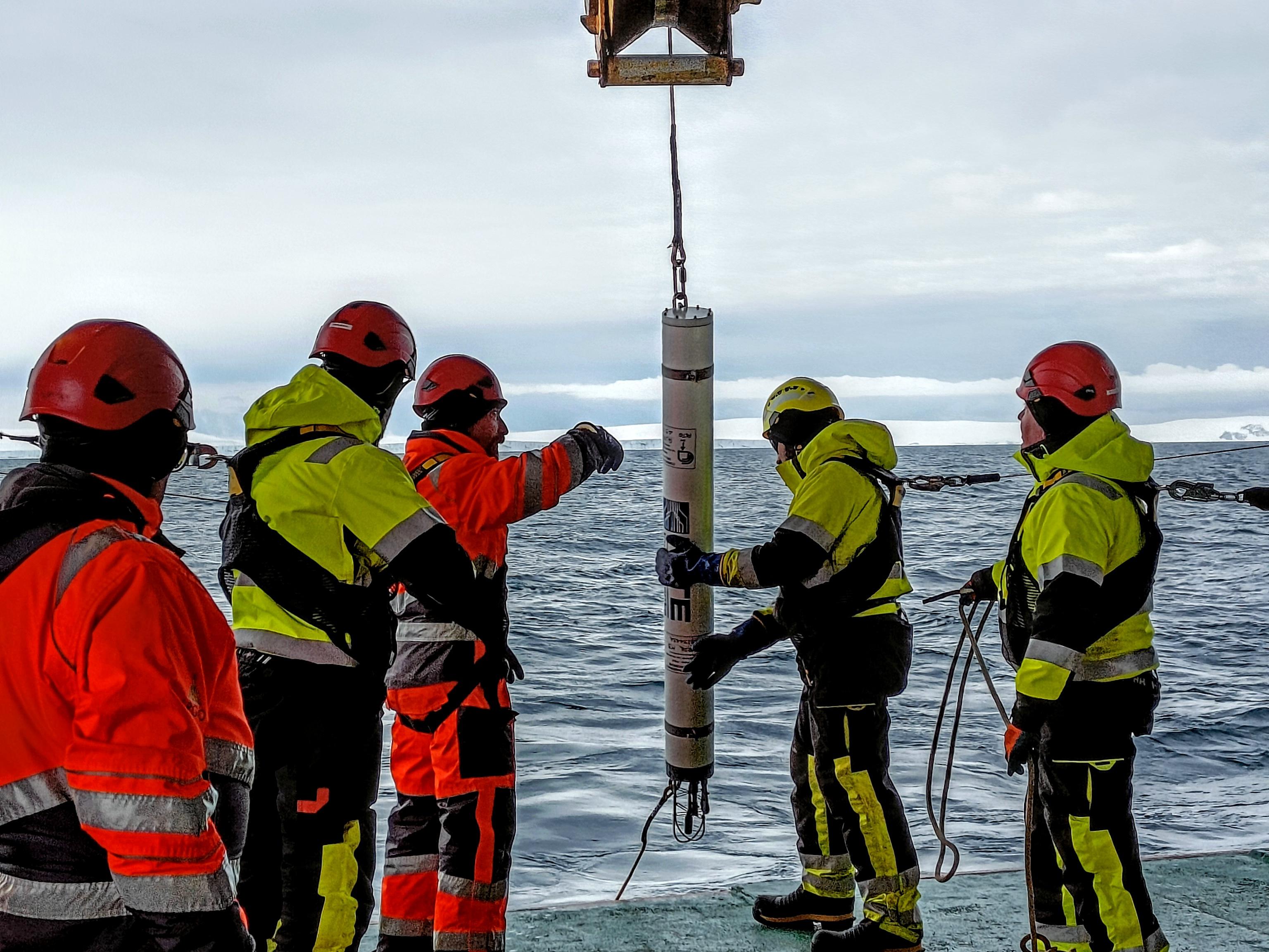- Acronym
- AMORS
- Code
- PNRA18_00154
- Anno
- 2018
- Research area
- Marine science
- Specific research topic
- Long-term acoustic monitoring of the Ross Sea
- Region of interest
- Ross Sea marine protected area
- PI
- Andrea Trucco
- PI establishment
- University of Genova
- Institutional website
- http://www.diten.unige.it/index.php?lang=it
- Other institutions and subjects involved
- National Research Council-Institute for the Study of Anthropogenic Impacts and Sustainability in the Marine Environment.
- Consistency of the research team
- PI: Andrea Trucco, professore ordinario Università degli Studi di Genova. Membri del team: Gabriele Moser, professore ordinario Università degli Studi di Genova; Sara Pensieri, ricercatrice del Consiglio Nazionale delle Ricerche (CNR-IAS), Roberto Bozzano, ricercatore del Consiglio Nazionale delle Ricerche (CNR-IAS); Emanuele Fava contratto post dottorato presso Università degli Studi di Genova; David Solarna studente di dottorato presso Università degli Studi di Genova.
- Project status
- In progress
- Main stations used
- Nave
- The project
The recent establishment of the marine protected area in the Ross Sea reinforces the need to preserve the biodiversity and large marine ecosystem of the basin, which represents one of the most productive areas of the Southern Ocean, although its acoustic characteristics are not yet fully understood.
The AMORS project aims to combine active and passive acoustic survey methods to address the need for long-term monitoring of environmental noise in Antarctica in all its components: physical (ice, wind), biological (vocalizations of marine mammals and birds, zooplanktonic migration) and anthropogenic.
- Images
-
- Motivation, importance of research
The proposal is aimed at enhancing the observational capability of the mooring L part of the MORSea infrastructure in order to acquire over an extended period, including during the winter months, information on both the marine environment in an unperturbed ocean landscape and the migratory movements of zooplankton, creating a unique acoustic dataset for the study of the Ross Sea sound budget. The simultaneous use of passive and active acoustic systems will, in fact, provide data of underwater sounds and backscatter whose interactions could provide relevant elements for increasing knowledge of the Antarctic ecosystem of the marine protected area.
- Objectives of the proposal
Assessment of Antarctic environmental variability can only be based on the availability of reliable long-term geophysical and biological observations. Such measurements play an important role in determining the point at which the cumulative effects of the environment and human activities affect animal populations. Often in biological studies, surveys of the physical environment are considered merely incidental, whereas they are complementary and an important component in understanding the behavior and processes of marine life.
In this context, AMORS aims to fill the gap by (a) exploiting a combined acoustic system (active and passive) that can overcome the difficulties of studying biological/geophysical changes on different time scales (day, month, year) even in winter months where visual/direct surveys are not possible and (b) providing the scientific community with services and indicators for environmental and ecosystem monitoring of Antarctica.
- Activities carried out and results achieved
Activities performed:
1) at-sea activities preparatory to the Antarctic campaign including in situ testing to define the optimal sampling strategy to be adopted for the acoustic profiler and passive acoustic sensor.
2) development of innovative algorithms based on discrimination between relatively stationary and transient sound sources and classification algorithms based on analysis of acoustic signatures of acquired measurements using supervised nonparametric classifiers and pattern recognition techniques (e.g., k-nearest neighbor, support vector machine, random forests).
3) passive acoustic data acquisition on the pack in December 2021.
3) installation of acoustic sensor on MORSEA observatory mooring L on January 23, 2022.
Results obtained:
Acoustic data set on pack and publication of results about the development of innovative algorithms to discriminate geo-physical noise sources.
- Products
Paper: A. Trucco, R. Bozzano, E. Fava, S. Pensieri, A. Verri and A. Barla, "A Supervised Learning Approach for Rainfall Detection From Underwater Noise Analysis," in IEEE Journal of Oceanic Engineering, 2022, vol. 47, number 1, doi: 10.1109/JOE.2021.3091769.
